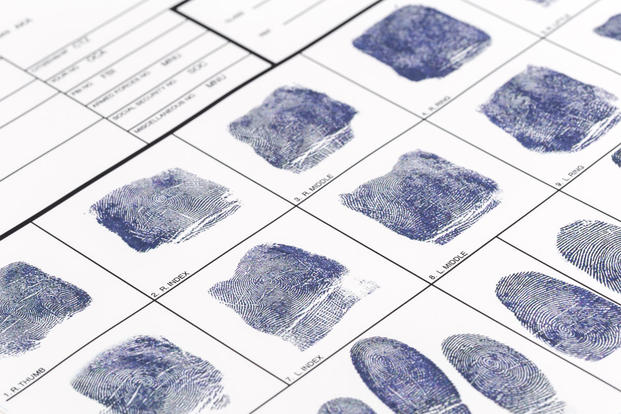The Defense Industrial Security Clearance Office (DISCO) furnishes National Industrial Security Program forms pertaining to personnel security clearances to authorized requestors, i.e., DSS regional offices, user agencies and contractors that have a facility security clearance.
Step 1: Beginning the Process to Obtain a Personnel Security Clearance
A personnel security clearance is an administrative determination by a trained adjudicator that an individual is eligible from a security standpoint under national security standards for access to classified information. In order to make this determination, a personnel security background investigation is conducted. This investigation is noncriminal in nature and covers a defined period of normally not more than the past 10 years. The information collected must be sufficient to allow an affirmative or negative determination of a person's eligibility for access to classified information.
Related: Search for security clearance jobs.
The security clearance process begins when a company determines that an employee or candidate for employment requires a personnel security clearance in order to perform the duties of their position. If the applicant has never held a personnel security clearance, or if their previous clearance was terminated more than 24 months ago, this is referred to as an initial clearance. The employee must complete a security questionnaire, a fingerprint card and release of information authorizations.
Step 2: Steps for the FSO to Submit a Clearance Request
The applicant completes the security questionnaire electronically after the facility's security officer (FSO) initiates the process, using the Joint Personnel Adjudication System (JPAS). In some instances, the FSO will receive indication from JPAS that an investigation is not required for the applicant. If this happens, the FSO should check the procedures for industrial clearance/investigation requests to determine whether this resolves the issue. If the FSO still has problems, contact the Defense Security Service (DSS).
Before submitting a request electronically, the FSO should review the applicant's JPAS record to ensure the investigation submission will be routed to DISCO, an element of the Defense Security Service. Instructions are contained in:
- Review the Add/Modify Non-DoD Person Screen Prior to Initiating an Investigation Request in JPAS
- Identify the Government Customer When Requesting an Investigation
- Requests for Personnel Security Investigations
- Retention of Standard Form 86
The FSO reviews the security questionnaire and other forms, collectively called the security clearance package, for completeness prior to forwarding.
Related: Does your resume pass the 6-second test? Get a FREE assessment.
DISCO does not accept single scope background investigations (SSBI) submitted as secret clearance requirements for automation data processing (ADP)/information technology (IT) positions. Requests for these types of needs in support of IT requirements must be submitted in accordance with procedures available from the Government Contracting Activity (GCA).
An interim eligibility determination may be requested from DISCO once the investigation has been submitted in accordance with GCA procedures and after the FSO has verified that JPAS reflects the SSBI is "scheduled." The FSO should then submit the request to DISCO. An e-QIP is required from JPAS users. Non-JPAS users may fax a copy of the completed SF-86 to 301-833-3912. Regardless of submission method, the request must clearly identify that the FSO is requesting an interim determination in support of a secret clearance with an IT1 SSBI investigation requirement.
Upon investigation closing, if JPAS does not reflect that DISCO has received the SSBI for adjudication, please submit a JPAS research/recertify/upgrade (RRU) action to DISCO and request an eligibility determination on the SSBI.
The security questionnaire is the questionnaire for national security positions, Standard Form 86.
- Most Common Reasons Security Clearance Requests Are Rejected by DISCO and OPM
- The SF-86 is accessed by the applicant after the request is initiated in JPAS by the FSO. The applicant will access the SF-86 via the Office of Personnel Management's (OPM) e-QIP system.
- Completing and Reviewing the Questionnaire for National Security Position SF-86 is provided.
- The National Industrial Security Program Operating Manual (NISPOM), DoD 5220.22 Manual, requires the FSO provide the employee with written notification that review of the security questionnaire is for adequacy and completeness, and the information will be used for no other purpose within the company.
- After ensuring the form is complete and attaching the certification and release(s), the FSO forwards the request to DISCO using JPAS.
Certification and Release(s)
- The FSO should ensure the submitted release is the release generated by the e-QIP system for the specific request number that is reflected on the release form. Failing to use the appropriate form will result in OPM rejecting the request.
- Certification and release forms may be scanned and attached to the investigation request in JPAS. This is the acceptable means to provide handwritten comments. Handwritten comments are required on the bottom of the certification form when there is a need to indicate the request is for periodic reinvestigation and no fingerprint cards are required. DSS recommends no annotations are made on the release forms.
Related: Discover your perfect career path and get customized job recommendations based on your military experience and vocational interests with Military.com's Military Skills Translator + Personality Assessment.
Fingerprint Cards
- Effective Oct. 1, 2011, the Office of Personnel Management requires fingerprint cards be submitted within 14 days of receipt of an investigation request, citing Federal Investigation Notice (FIN) 11-04. This is a change from the long-standing agreement for DoD submitting fingerprint cards within 30 days. To prevent clearance applications from being returned unacceptable, please confirm through JPAS that DISCO has forwarded the e-QIP submission to the OPM and immediately transmitted the fingerprint card.
- The FSO may confirm the OPM has received the investigation request by checking the SII in JPAS, which will show a "received" status.
- The OPM returns release form(s) and fingerprint card(s) (FPCs) to the clearance applicant 30 days after receipt if it does not receive the required Electronic Questionnaire for Investigations Processing (e-QIP).
- The under secretary of defense, intelligence (USD(I)), directed all DoD components to transition to electronic capture and submission of fingerprints in support of personnel security investigations by Dec. 31, 2013.
- This requirement extends to contractors cleared under the National Industrial Security Program.
- Implementation across the NISP will require a phased approach given the size of the cleared contractor community and the fact that only 11% currently submit fingerprints electronically.
- Cleared contractors can use the Secure Web Fingerprint Transmission (SWFT) program to submit fingerprints electronically immediately.
- Because of the costs associated with SWFT, the Defense Security Service and the Security Directorate, (USD(I)), are looking at other transmission methods for cleared industry.
- Fingerprint cards are required for initial investigations. If the request is marked as a periodic reinvestigation with a break in service, OPM highly recommends the submission of a fingerprint card.
- Annotate the e-QIP reference number in the "YOUR NO. OCA" block on the fingerprint cards. The reference number may be obtained from the bottom of the release and certification forms.
- The addresses to send fingerprint cards to OPM are:
- US Mail -- e-QIP Rapid Response Team, OPM-FIPC, Post Office Box 618, Boyers, PA 16020, or,
- FedEx -- e-QIP Rapid Response Team, OPM-FIPC, 1137 Branchton Rd., Boyers, PA 16020, phone 724-794-5612.
Step 3: DISCO Review and Processing
DISCO reviews all industrial applicant security clearance packages for completeness before forwarding to the organization that conducts the investigation. As part of the review, DISCO checks the files and systems available to them to determine whether the applicant already has a clearance eligibility or completed investigation by another federal entity.
If so, DISCO can potentially use that clearance eligibility or request a copy of the investigation to support issuing clearance eligibility in lieu of requesting a new investigation. Concurrent with review of the security clearance package, DISCO will determine whether the individual is eligible for an interim clearance. In most cases, clearance applicants may be put to work with an interim clearance. Further information about interim clearances may be found here.
Step 4: Receipt of the Investigation Request by the Investigation Provider
Once the investigative provider receives the security clearance package, they review it for completeness to ensure they have the required components to start the investigation. If the investigative provider does not receive all required components within the required timeframe (30 days), the pieces of the investigation package are returned to DISCO.
If this happens, DISCO will contact the FSO and provide instructions on steps required to resume the processing. Once the request is accepted by the investigative provider, they conduct a check of national agency records, which includes a fingerprint check. Investigators verify the information the applicant supplied in their security clearance package, such as where the applicant has lived, gone to school and worked.
Some types of investigations require that investigators contact current and former neighbors, supervisors, co-workers and classmates, as well as the references applicants have provided. Investigators verify educational records and may interview school sources. They also contact law enforcement agencies in each of the places an applicant has lived, worked or attended school. A case manager ensures that the appropriate investigation leads and contacts from the applicant's past are completed during the background investigation. Some investigation types require a personal interview between the applicant and investigator.
Step 5: After the Investigation -- the Adjudication
After an investigation has been completed, a person trained in the process of reviewing and evaluating security clearance information reviews the results of the investigation and compares it to established qualifying criteria for eligibility to access classified national security information. This person, an adjudicator, considers the whole person, i.e., both favorable and unfavorable information, in making the clearance decision. Briefly, the adjudicator considers the following factors when evaluating an individual's conduct:
- The nature, extent and seriousness of the conduct
- The circumstances surrounding the conduct, to include knowledgeable participation
- The frequency and recency of the conduct
- The individual's age and maturity at the time of the conduct
- The extent to which participation is voluntary
- The presence or absence of rehabilitation and other permanent behavioral changes
- The motivation for the conduct
- The potential for pressure, coercion, exploitation or duress; and
- The likelihood of continuation or recurrence of the conduct
Each case is judged on its own merits, and the final determination is the responsibility of the specific department or agency that adjudicates the clearance eligibility. Any doubt regarding whether access to classified information is clearly consistent with national security must be resolved in favor of national security.
Step 5.a: Investigations referred to the Defense Office of Hearings and Appeals
While the majority of applicants are granted a clearance, complicating factors may delay a decision or result in a denial or revocation of a security clearance. For industry, if the applicant's request is not clearly consistent with national security interests, DISCO forwards the case to the Defense Office of Hearings and Appeals (DOHA), in the Defense Legal Services Agency, to determine whether it is clearly consistent with the national interest to grant or continue a security clearance for the applicant. The additional directives that provide information on this process are Executive Order 10865, "Safeguarding Classified Information Within Industry" and the Defense Industrial Personnel Security Clearance Review Program, DoD Directive 5220.6.
Step 5.b: Investigations referred for adjudication for Sensitive Compartmented Information (SCI) eligibility.
At this time, DISCO does not issue SCI eligibility determinations. Upon review by the DISCO adjudicator, if a request indicates that SCI is needed, the request will be forwarded to the appropriate government central adjudication facility (CAF) that has cognizance for the SCI determination.
Related: For the latest veteran jobs postings around the country, visit the Military.com Job Search section.
The Next Step: Find the Right Veteran Job
Whether you want to polish up your resume, find veteran job fairs in your area, or connect with employers looking to hire veterans, Military.com can help. Sign up for a free Military.com membership to have job postings, guides and advice, and more delivered directly to your inbox.











